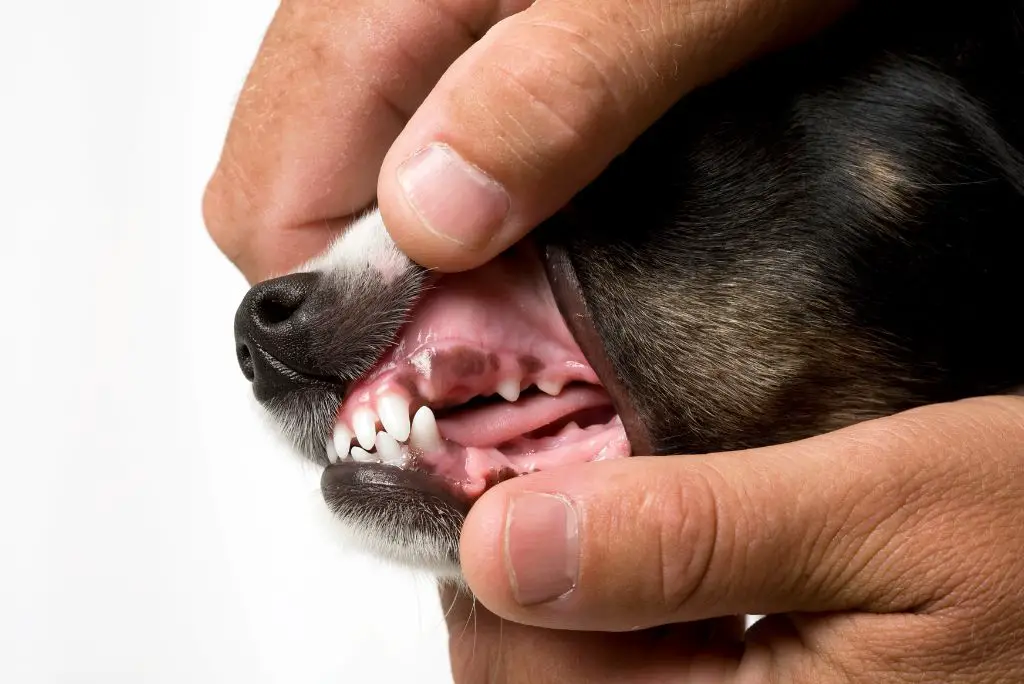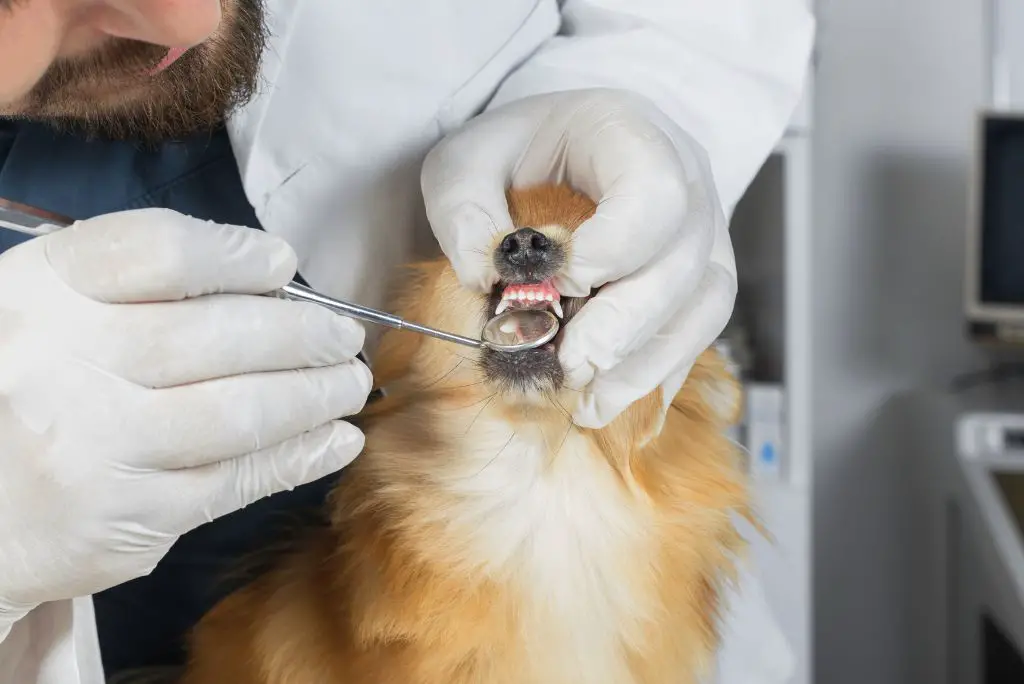Dental health is not only overlooked in humans, the same is true for dogs and healthy dog gums don’t simply happen, you need to care for them. VCA Animal Hospitals states that dental disease is one of the most common medical conditions seen by veterinarians, affecting over 80% of dogs over the age of three. Don’t let one of them be your dog.
To care for your dog’s gums you not only need to monitor and brush them but you’ll also need to learn how to identify any potential issues so you can catch them early on and prevent them from getting worse. One thing that is important to note is that a dog’s gums are a reflection of its overall health status. So it’s important to know what each symptom can mean.
Article contents
What do healthy dog gums look like?
Generally speaking, healthy dog gums will have a pink shade that will resemble a bubblegum color. However, there are a few exceptions. It can be normal for some dogs to have black gums, especially in those with darker snouts, lips, and tongues. So if your dog has black gums or black spots in its gums and always has, there’s no need to worry. That’s totally normal. However, if the black spots weren’t there before, that can be a dangerous sign which will be covered a bit more in depth in the next section.
Besides the color, healthy dog gums should also be moist and shiny which means that a dog is hydrated. You can simply run your finger over them to check that they’re wet and should not be sticky or dry.
Another thing that is important is to check the capillary refill time. To do this you’ll need to press your dog’s gums with either your index finger or thumb. As soon as you take your finger off, you’ll see the gum turn to a white or pale pink color and then immediately return to the normal pink color. The amount of time it takes to go back to its normal color is called the capillary refill time (CRT).
The CRT shouldn’t be longer than 2-3 seconds. Anything over that is a sign that something is wrong and you should see your vet as soon as possible.
5 symptoms of gum disease in dogs
It’s important to check your dog’s gums regularly for any signs that might indicate gum disease. The earlier you catch a potential problem, the easier it will be to solve and the less suffering your dog will go through. When checking your dog’s gum, look out for the presence of plaque, bad breath, and take a close look at the gum’s color. Here are a few colors that can be potential warning signs:
- Black Gums: It was mentioned before that some dogs may have always had black gums or black spots. But when this color wasn’t there before, it can be a sign of oral cancer, or periodontal disease, if it’s accompanied by bad breath;
- Blue or Purple Gums: This color is called cyanosis and indicates a lack of oxygen in the blood. This can be caused by pneumonia, pulmonary thromboembolism, congestive heart failure, or any other respiratory problem that caused a decrease in the blood’s oxygenation rate;
- Pale Pink or White Gums: This color indicates a lack of blood flowing through the gums and is often a sign of anemia or acute blood loss. That’s because the body doesn’t have enough blood to circulate throughout the body and so the normal bubblegum pink color fades from the dog’s gums;
- Bright Red Gums: This color is a strong indication that there’s an inflammation or infection in the gums, which can be due to gingivitis or another periodontal problem that makes the gums bleed more easily. This condition is very painful for dogs. Another reason behind bright red gums could be heat stroke as high temperatures can cause the body to send more blood to the extremities of the body, including the mouth;
- Growths: Some dogs may develop small oral tumors that can be benign and go away without any medical intervention. However, some growths can be cancerous or contagious. One type of growth can be caused by Papillomatosis which is a viral disease that spreads easily from dog to dog and results in fleshy warts on the gums or other areas of the body. Other gum tumors can also cause severe issues as they can get in the way of eating which leads to dogs losing too much weight and becoming weak and lethargic.
How to prevent and treat gum disease
The best way to prevent gum disease is to incorporate oral hygiene into your regular dog grooming routine. The most effective way to do this and care for your dog’s teeth is by brushing them with either a soft-bristled toothbrush or finger brush and dog-safe toothpaste. Doing this regularly will prevent plaque from building up and reduce the risk of infection.
Never use your own toothpaste to brush your dog’s teeth as toothpaste for humans contains xylitol which is lethal to dogs. If you’re not sure which products to pick, you can talk to your vet or get a dental kit for dogs. For dogs that aren’t fans of having their teeth brushed, there are some alternatives like using rubber chew toys or dental sticks or chews. Some people suggest using natural bones or rawhide but this can damage their teeth and do more harm than good.
Even with prevention, it’s still a good idea to keep an eye out for the symptoms described above so that, if you catch any problem early enough, your vet may be able to treat it with a simple cleaning procedure. However, if the problem gets out of hand and you suspect something serious is going on, take your dog to the vet as soon as you notice it. Your vet may need to perform a dental exam with your dog under general anesthesia and take some X-rays in order to properly identify what the root cause is.
Only after pinpointing exactly what’s going on, will it be possible to determine the appropriate treatment. This can range from removing plaque and tartar on the tooth’s surface to periodontal surgery and tooth extraction. If there’s a suspicion of oral cancer, the vet will need to order a biopsy by removing a sample of the growth and sending it to a laboratory for further analysis.
Making sense of it all
In order to have healthy dog gums, your pet will need some consistent care from you. That can be as simple as brushing your dog’s teeth as part of its grooming routine, using a rubber chew toy, or dental sticks. Regular monitoring is also important so that, if something happens, you’re able to catch the problem early on. The earlier you can catch it, the easier it can be to solve, preventing it from developing into something more serious that may require surgery or tooth extraction.
Anytime you’re unsure whether or not your dog has gum or dental disease, make sure to check with your vet.


